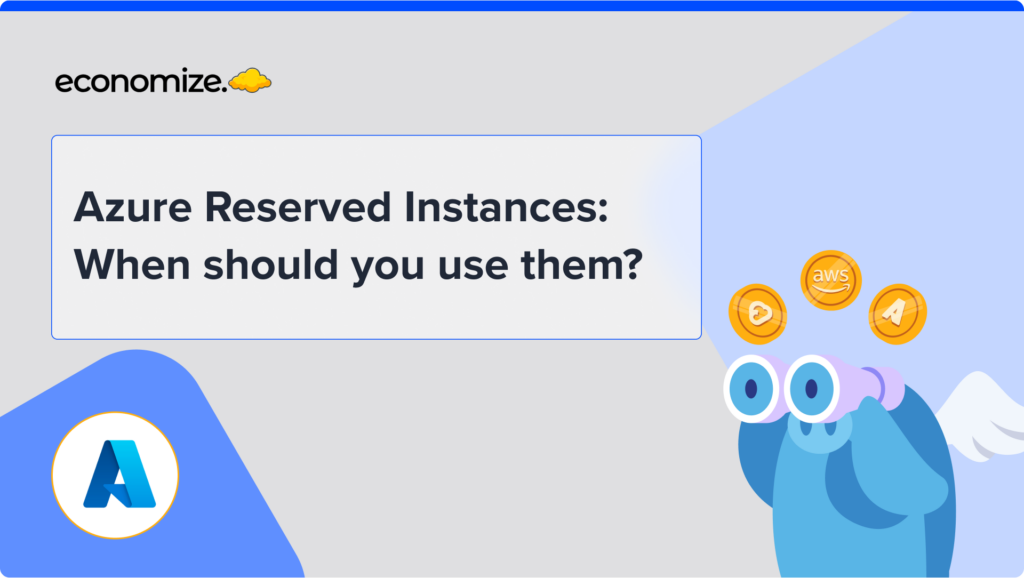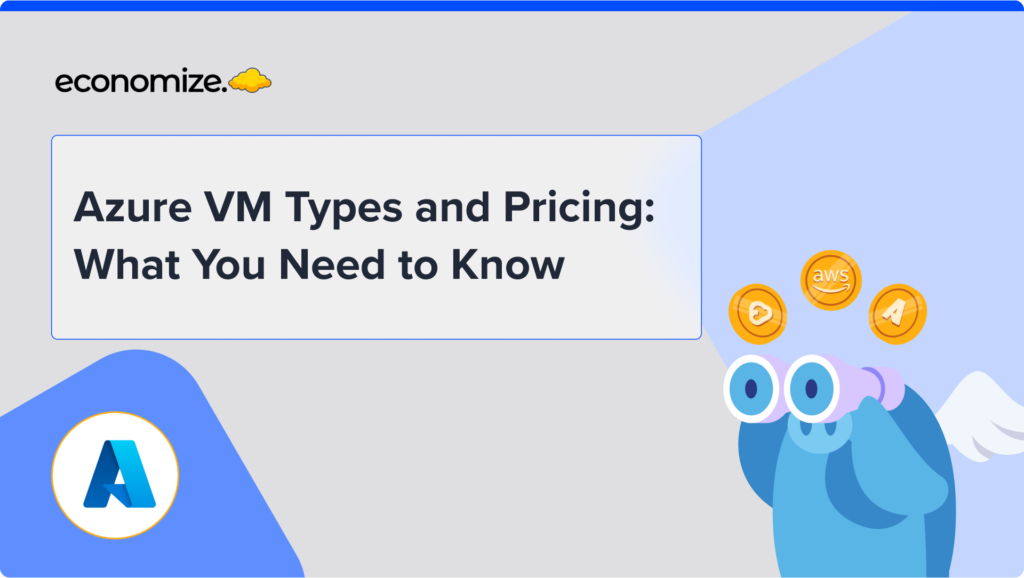Committed Use Discounts (CUDs) are a cost optimization option available on Google Cloud Platform (GCP) that enable customers to commit to a certain level of usage for a period of time, in exchange for a discounted rate.
This can be a great way for organizations to save money on their cloud computing costs, while also gaining flexibility and predictability in their usage. In this article, we will discuss the different types of CUDs available in GCP, as well as how they are priced and the advantages of using them.
What are Committed Use Discounts?
Committed Use Discounts are a pricing model offered by GCP that allows you to save money by committing to a specific amount of usage for a certain period of time. Essentially, you’re pre-paying for a set amount of resources for a period of time (e.g. 1 year), and in return, you receive a discounted rate.
Committed Use Discounts are applied to your on-demand usage, so you’ll see the savings reflected in your bill. The discounts vary depending on the type of resources you’re using and the length of your commitment.
- For example, if you commit to using 2,000 vCPUs for 1 year, you’ll receive a discount of 52% compared to on-demand pricing.
- It’s important to remember that Committed Use Discounts are not exclusive to a specific project or organization, meaning you can apply the committed usage across different projects and even different organizations.
Take, for instance, a scenario where you operate a number of instances for a month while using a total of 10 vCPUs and 48.5 GB of RAM. Then, the next month, when your compute requirements vary, you can alter the sizes, locations, and operating systems of your instances, but still your overall resource usage does not change. With committed use discounts, even when your entire usage is different between the two months, you still get the same discount.
Types of Committed Use Discounts & GCP CUD Pricing
There are three types of Committed Use Discounts (CUDs), that can be applied on your GCP billing cycle.
Resource-based Committed Use Discounts
Resource-based committed use discounts apply to specific resources, such as virtual machine (VM) instances, GPUs, and memory. With this type of discount, you commit to a specific amount of usage for a certain period of time, and in return, you receive a discounted rate on that resource.
- For example, if you commit to using 2 n1-standard-8 instances for a year, you will receive a discounted rate on those instances.
- The discounts vary depending on the resource and the length of the commitment, but they can be as high as 57% for a one-year commitment.
- To qualify for resource-based committed use discounts, you must commit to a minimum of $250 per month in usage for a minimum of one month.
Compute Engine Flexible Committed Use Discounts (Flexible GCP CUDs)
In addition to resource-based committed use discounts, GCP also offers Compute Engine Flexible Committed Use Discounts (Flexible CUDs). These discounts are similar to resource-based discounts, but they apply to all VM instances within a project, rather than specific resources. This allows you to commit to a certain amount of usage for a period of time, and in return, receive a discounted rate on all instances.
- For example, if you commit to using $1,000 per month in usage for a year, you will receive a discounted rate on all instances within that project. The discounts vary depending on the length of the commitment, but they can be as high as 45% for a one-year commitment.
- To qualify for Flexible CUDs, you must commit to a minimum of $250 per month in usage for a minimum of one month.
- Additionally, Flexible CUDs can be combined with resource-based committed use discounts, allowing you to receive even greater savings.
Spend-Based Committed Use Discounts
Along with Resource-Based and Compute Engine Flexible Committed Use Discounts, GCP also offers Spend-Based Committed Use Discounts. With this type of discount, you commit to a specific amount of monthly spending for a certain period of time, and in return, you receive a discounted rate on all of your GCP usage. It is also important to note that Spend-Based CUDs are only applicable to specific services.
- For example, if you commit to spending $10,000 per month for a year, you will receive a discounted rate on all of your GCP usage for that year.
- The discounts vary depending on the amount of the commitment and the length of the commitment, but they can be as high as 45% for a one-year commitment of $250,000 or more per month.
- To qualify for Spend-Based Committed Use Discounts, you must commit to a minimum of $250,000 per month in spend for a minimum of one month.
- Spend-based CUDs are only applicable to Cloud SQL, Cloud Spanner, Google Cloud VMware Engine, Cloud Run, Google Kubernetes Engine & Compute Engines.
Advantages of using Committed Use Discounts (CUDs)
Using CUDs can provide several advantages for organizations that rely on GCP for their cloud processing workloads. They include:
- Cost savings: The most significant advantage of CUDs is cost savings. By committing to a certain amount of usage or spend for a period of time, organizations can receive discounts of up to 57% on their GCP services. These discounts can significantly reduce the overall cost of cloud computing, making it more affordable for organizations of all sizes.
- Budget predictability: With CUDs, organizations can predict their monthly cloud costs more accurately, as they are committing to a certain amount of usage or spend. This makes it easier to plan and budget for cloud expenses, and eliminates the risk of unexpected spikes in costs.
- Flexibility: Resource-based CUDs and compute engine flexible CUDs offer organizations the flexibility to choose the services they want to commit to, and for how long. This allows organizations to optimize their cloud costs based on their specific needs and usage patterns.
- Long-term savings: The longer the commitment, the greater the potential savings. For example, committing to a resource-based CUD for three years can result in much higher discounts compared to committing for one year.
- No upfront payments: Unlike some other cloud providers, GCP does not require organizations to make upfront payments for CUDs. This means that organizations can take advantage of the discounts without having to make a large upfront investment.
- Easy to manage: CUDs are easy to manage and monitor through the GCP Console. Organizations can track their committed usage and adjust their commitments as needed.
- No penalty for under-utilization: Organizations do not face any penalties if they do not fully utilize their committed usage or spend. This means that organizations can take advantage of the discounts without having to worry about the consequences of under-utilization.
- Reduced lock-in: CUDs are flexible, and organizations can change or cancel their commitments at any time. This reduces lock-in and allows organizations to take advantage of new services or technologies as they become available on GCP.
Difference Between Committed Use Discounts (GCP CUDs) and Sustained Use Discounts (GCP SUDs)
It’s important to note that CUDs are different from Sustained Use Discounts. Sustained Use Discounts (SUDs) are automatic discounts that are applied to usage that exceeds a certain threshold, whereas CUDs require an explicit commitment to a certain level of usage.
- Sustained use discounts can be a great option for organizations that have variable resource needs, as they can take advantage of the discounts without having to make a commitment.
- However, CUDs can be a more cost-effective option for organizations that have a consistent need for a certain level of resources, as they can lock in a discounted rate for a longer period of time.
Organizations that primarily use GCP can use both CUDs and SUDs to save costs. They can use CUDs to lock in a discounted rate for their consistent resource needs, and SUDs for usage that exceeds their committed levels.
Conclusion
In conclusion, CUDs and SUDs are powerful tools for cost reduction. With these GCP commitments to a certain amount of usage or spend for a specified period, organizations can receive substantial discounts on their GCP services, saving significantly on their cloud costs without compromising any services.
CUDs and SUDs provide many advantages such as cost savings, budget predictability, flexibility, long-term savings, easy management, no upfront payments, no penalty for under-utilization, and reduced lock-in. These benefits make CUDs and SUDs a smart choice for organizations looking to control GCP costs and get the most out of their cloud investments.
So, if you’re looking to save on your GCP costs, consider committing to a CUD or SUD today. It’s like a cloud computing version of a gym membership: you pay a little upfront, and enjoy the benefits for a long time!
How can we help?
Tired of your cloud costs building up? Don’t let cloud costs weigh you down anymore. With Economize, you can slash your cloud expenditures by up to 30% effortlessly. Book a free demo with us today and discover how we can help you start saving in as little as 10 minutes.










